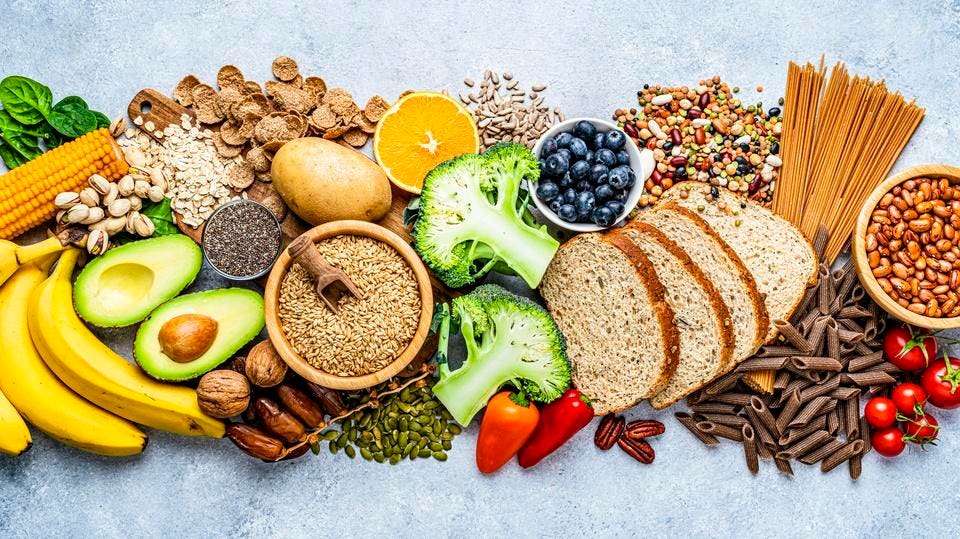
The “fibermaxxing” trend on TikTok is encouraging people to increase their fiber intake significantly. This movement highlights the consumption of high-fiber foods such as berries, oranges, avocados, chia seeds, wholegrain breads, and more. While the trend may seem beneficial, it raises important questions about how much fiber people should actually be consuming.
As TikTok trends go, “fibermaxxing” is likely one of the healthier ones. Unlike some previous bizarre trends, this one promotes a dietary change that could benefit many. According to the U.S. Department of Agriculture, most Americans do not consume the recommended daily amount of fiber, making this trend particularly relevant. However, overconsumption can lead to gastrointestinal discomfort, so moderation is key.
Understanding the Benefits of Fiber
Dietary fiber, the focus of “fibermaxxing,” consists of plant-based food components that the human digestive system cannot fully digest or absorb. Different types of dietary fiber offer various health benefits. Some fibers act as bulking agents, helping to regulate bowel movements by absorbing water and facilitating waste passage. Others can slow digestion, prolonging the feeling of fullness, or impact nutrient absorption.
Research has linked higher fiber intake to numerous health benefits, including regular bowel movements, stabilized blood sugar levels, reduced cholesterol, and improved heart health. Over time, these benefits may lower the risk of chronic diseases such as obesity, cardiovascular disease, diabetes, and certain cancers.
Recommended Fiber Intake
The average American adult consumes only 10 to 15 grams of fiber per day, far below the recommended levels. The U.S. Food and Drug Administration suggests a daily intake of 28 grams for adults consuming a 2,000-calorie diet. The USDA’s Dietary Guidelines for Americans specify that women aged 18 to 50 should consume 25 to 28 grams daily, with a slight decrease after age 50. For men, the recommendation is 31 to 35 grams daily, decreasing to 28 grams for those over 50.
High-Fiber Foods to Consider
To increase fiber intake, individuals should incorporate more fruits, vegetables, legumes, seeds, and whole grains into their diets. For example, a cup of raspberries contains about eight grams of fiber, while a medium-sized pear offers 5.5 grams. Vegetables like boiled green peas provide nine grams per cup, and a medium-sized baked potato with skin contains four grams.
Whole grains and legumes are also excellent sources. A cup of cooked whole-wheat spaghetti delivers six grams of fiber, while a cup of boiled lentils offers 15.5 grams. Nuts such as almonds and pistachios can add three to 3.5 grams per ounce.
Potential Risks of Overconsumption
While increasing fiber intake can be beneficial, excessive consumption may lead to adverse effects such as bloating, gas, and stomach cramps. The “maxxing” aspect of the trend suggests prioritizing one nutrient over others, which can result in an unbalanced diet. It’s essential to maintain a varied diet that meets all nutritional needs.
High fiber intake can also lead to dehydration, as fiber absorbs fluid in the gut. It’s crucial to drink plenty of water to prevent dehydration, which can be monitored by observing urine color—dark urine may indicate a need for more fluids.
Balancing Fiber Intake
To avoid gastrointestinal discomfort, it’s advisable to increase fiber intake gradually and pair it with adequate hydration. Physical activity can also help alleviate symptoms like bloating and gas by promoting regular bowel movements. If excessive fiber leads to constipation or other bowel issues, reducing intake and consulting a healthcare provider may be necessary.
Ultimately, while the “fibermaxxing” trend encourages a beneficial dietary change, it is important to approach it with balance and caution. By carefully monitoring fiber intake and maintaining a well-rounded diet, individuals can enjoy the health benefits without the drawbacks.







